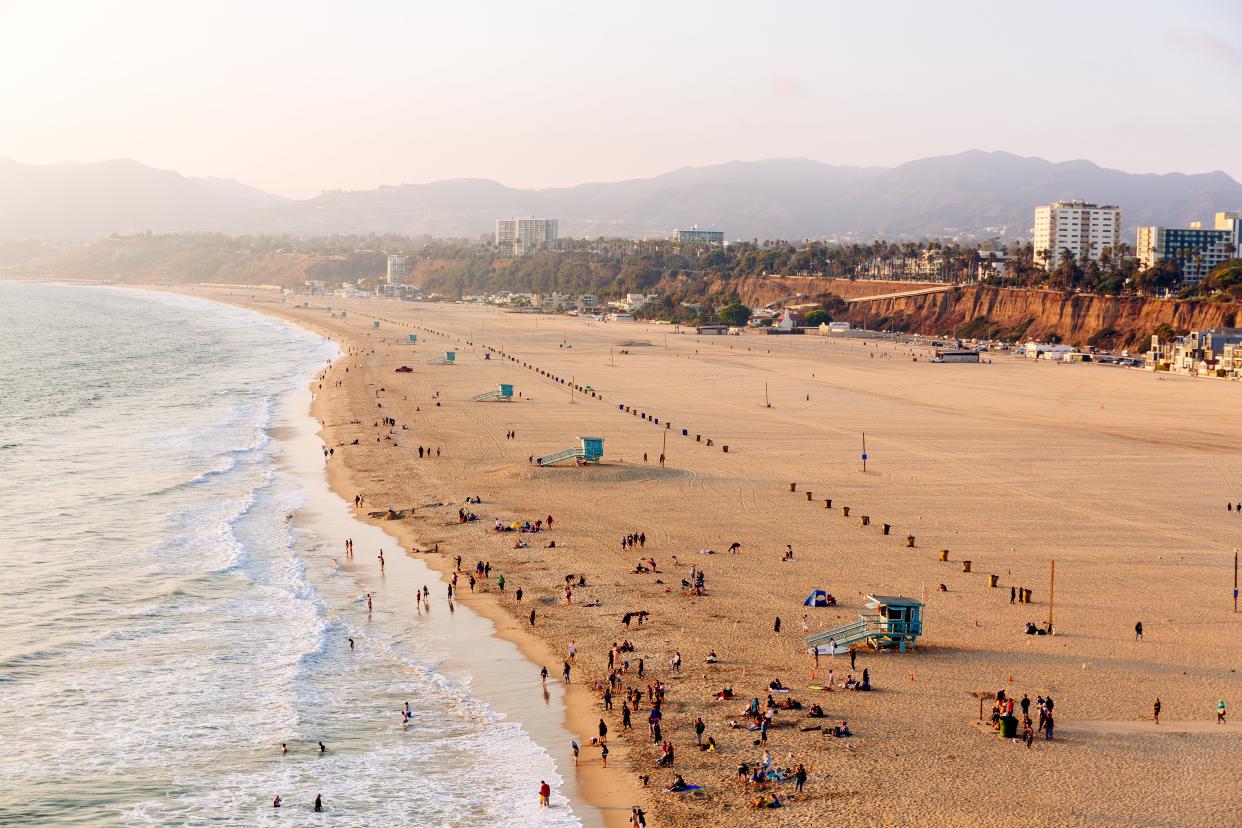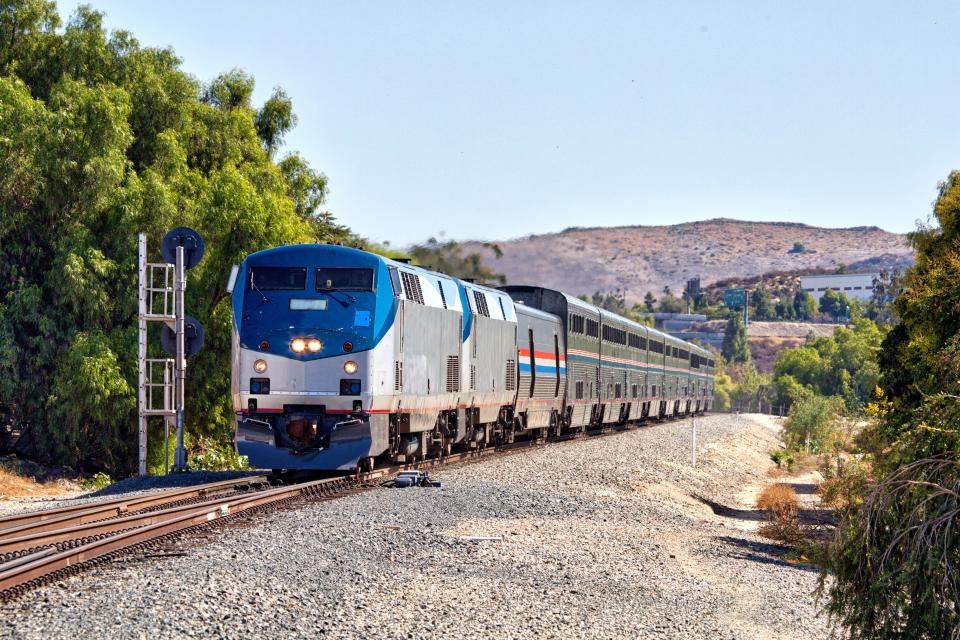How to Avoid Traffic and Crowds While Traveling This Memorial Day Weekend

Alexander Spatari/Getty
Memorial Day officially kicks off the summer travel season here in the US, and millions of travelers plan relaxing long weekends around it. But in order to get to a sunny beach or serene national park to unwind, you'll likely have to contend with stressful crowds and traffic—unless you time your great escape exactly right.
No matter what type of transportation you choose, Memorial Day traffic will be inevitable this year. According to AAA data, nearly 44 million Americans will be traveling over the holiday stretch from Thursday, May 23 to Monday, May 27. That’s the second highest number AAA has seen since it began tracking Memorial Day data in 2000.
“We’re projecting an additional one million travelers this holiday weekend compared to 2019, which not only means we’re exceeding pre-pandemic levels but also signals a very busy summer travel season ahead,” Paula Twidale, senior vice president of AAA Travel, said in a statement.
Fortunately, there are a few simple steps travelers can take to avoid the worst of the hubbub, whether on the interstate, at the airport, or a train station. Being smart about when to depart and return can make a huge difference in terms of traffic—and smoothing out other logistics.
Here’s a guide to the best and worst times to travel over Memorial Day Weekend, broken down by mode of transport.
Road trips
According to AAA’s projections, the majority of travelers will be hitting the open road this Memorial Day: More than 87% of travelers—a whopping 38.4 million people—are planning to take a road trip over the weekend. That’s the highest number of Memorial Day drivers AAA has ever seen, meaning planning ahead will be more important than ever.
In general, it’s a good idea to get an early start when driving on Thursday and Friday. On those days, the best car travel times will be before 11 a.m., according to AAA’s report, which used traffic data from Inrix. After 7 p.m. on Thursday or 8 p.m. on Friday will also see lower traffic numbers. The worst times to be on the road on Thursday and Friday will be from about noon to 7 p.m. (all local time).
When returning home on Sunday or Monday, you’ll want to avoid driving between 3 p.m. and 7 p.m., as those times are projected to be the most congested on the road. Instead, aim to depart before 1 p.m. on Sunday or after 7 p.m. on Monday when the number of cars on the road will be significantly lower.
AAA and Inrix also mapped out the peak Memorial Day traffic periods throughout the weekend for 16 major cities across the US. If you’re driving to or from a major metropolis, it’s worth checking out the table for the worst traffic time for your destination. For example, if you plan to drive to Tampa, Florida, at 9 a.m. on Sunday (forecasted to be the city's peak congestion time) on Interstate 75 south, you can expect your journey to be 88% longer than normal. “Travel times are expected to be up to 90% longer than normal,” Bob Pishue, transportation analyst at Inrix, said in the AAA release. “Travelers should stay up to date on traffic apps, 511 services, and local news stations to avoid sitting in traffic longer than necessary.”
If you’re renting a car, prepare for long wait times at the rental lots, especially in popular vacation destinations like Orlando, Denver, Atlanta, Boston, and Las Vegas, which are showing the highest rental demand, according to car rental company Hertz. The busiest pickup days will be Thursday May 23 and Friday May 24. Before setting out on your trip, check with your car rental company to see if they offer an expedited pickup option. Companies usually offer express checkout or fast lane options for members of their loyalty programs, which are usually free to join. You could also consider alternative car rental companies like Turo and Kyte, which offer up private drivers’ personal cars through an app. These options can be cheaper and will help you sidestep hectic rental lots altogether.
Train journeys
AAA predicts that an additional 1.9 million travelers will take other modes of transport this Memorial Day, including buses, cruises, and trains.
Summer is one of the most popular times of year for travelers to book trips on Amtrak, with the holiday weekends being especially busy. Although data from Amtrak on which routes and departure times would be busiest wasn’t immediately available, it’s safe to assume that the busiest travel times will be close to the general guidelines for road travel. With that said, prepare for packed trains on Thursday and Friday from 11 a.m. to about 8 p.m., and for crowds on board to peak on Sunday and Monday later in the day, from about 3 p.m. to 7 p.m.
If your train offers business class, you might consider upgrading your seat. Not only does the premium car allow more leg room and complimentary drinks, but you also get a seat assignment in advance, allowing you to bypass the scramble for a spot after boarding.

Amtrak Coast Starlight (Los Angeles - Seattle) train at Moorpark, California
Air travel
AAA says that more than 3.5 million air travelers will take to the skies this holiday weekend, an increase of 4.8% over last year.
Friday, May 24 will be the peak travel day at US airports with 26,265 flights scheduled to take off across the country, according to data from aviation analytics firm Cirium. TSA forecasts show Friday will also be the busiest day at airport security checkpoints, with the agency anticipating to screen nearly 3 million passengers that day alone.
All this means you’ll want to follow the standard advice of arriving at the airport at least two hours before a domestic flight (and three hours for international ones), especially if you’re returning a rental car, checking bags, and/or don’t have a membership to and expedited security service like TSA PreCheck or Clear.
If possible, it's always smart to try and get on the first flight of the day, says Hopper’s Memorial Day report. “In general, flights departing after 9 a.m. are two times more likely to be delayed than departures scheduled between 5-8 a.m.,” the report says. “To avoid travel disruption, fly as early in the morning as possible.”
Here’s a look at the 10 US airports that will be the busiest over the long weekend, and the busiest travel times at each one, according to Hopper’s predictions.
Atlanta ATL: Busiest time to depart: 8 a.m. - 12 p.m.
Dallas DFW: Busiest time to depart: 4 p.m. - 8 p.m.
Denver DEN: Busiest time to depart: 8 a.m. - 12 p.m.
Chicago O'Hare ORD: Busiest time to depart: 4 p.m. - 8 p.m.
Los Angeles LAX: Busiest time to depart: 8 a.m. - 12 p.m.
New York City JFK: Busiest time to depart: 4 p.m. - 8 p.m.
Charlotte CLT: Busiest time to depart: 8 a.m. - 12 p.m.
Las Vegas LAS: Busiest time to depart: 8 a.m. - 12 p.m.
Orlando MCO: Busiest time to depart: 8 a.m. - 12 p.m.
Seattle SEA: Busiest time to depart: 8 a.m. - 12 p.m.
There are a few things you can do to make sure the airport security screening goes as smoothly as possible. If you’re enrolled in a trusted traveler program like TSA PreCheck, make sure your known traveler number (KTN)—a unique ID sequence of letters and numbers—is on your boarding pass. Without it, you won’t be granted access to the PreCheck lane. You can add your KTN to your reservation during the booking process, or after you purchase your tickets by calling the airline. You can also ask an airline agent to do this at the ticketing desk in the airport, but expect long lines.
Currently, 20 domestic airports allow travelers to schedule a free fast-track through the regular security line by reserving a time slot online. The shortcut, called Reserve by Clear, is completely free of charge and essentially allots fliers a set appointment time so they can breeze through security.
Originally Appeared on Condé Nast Traveler

